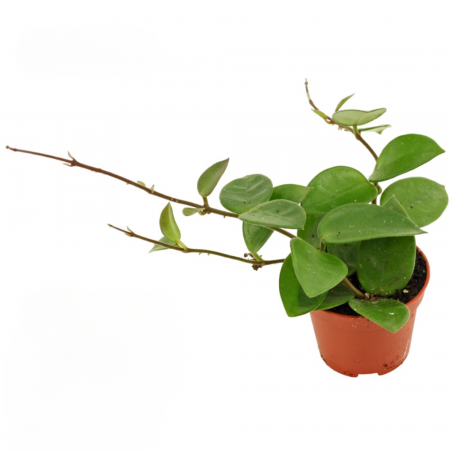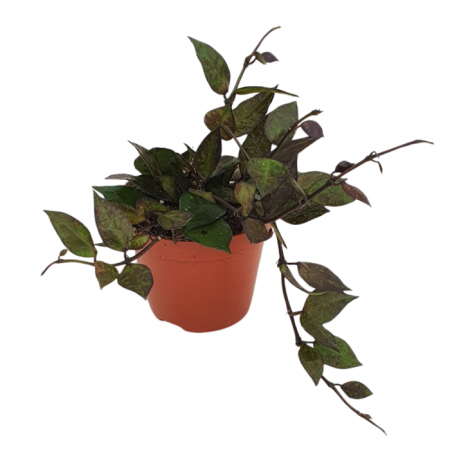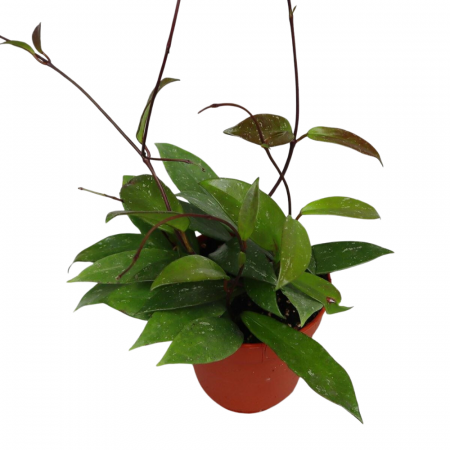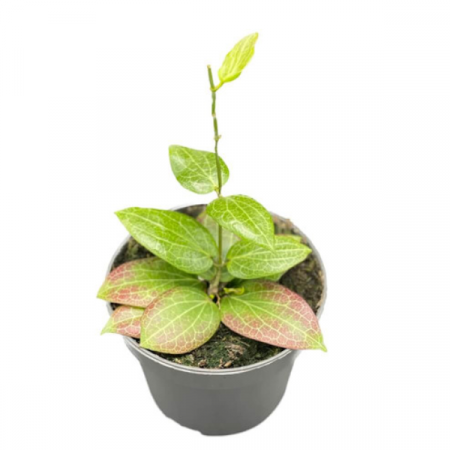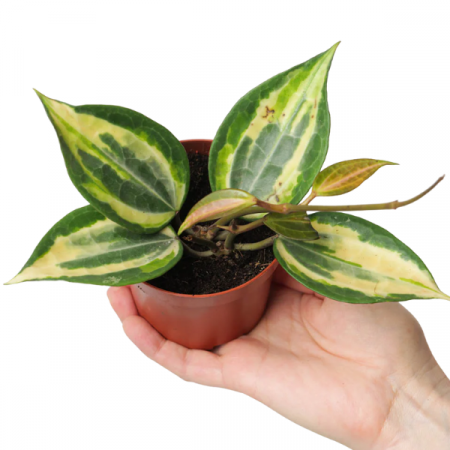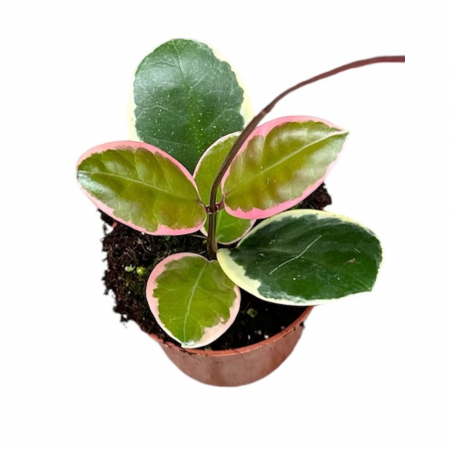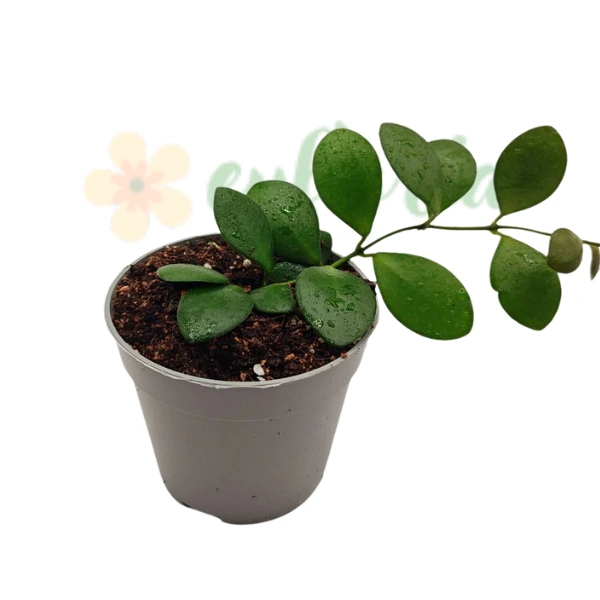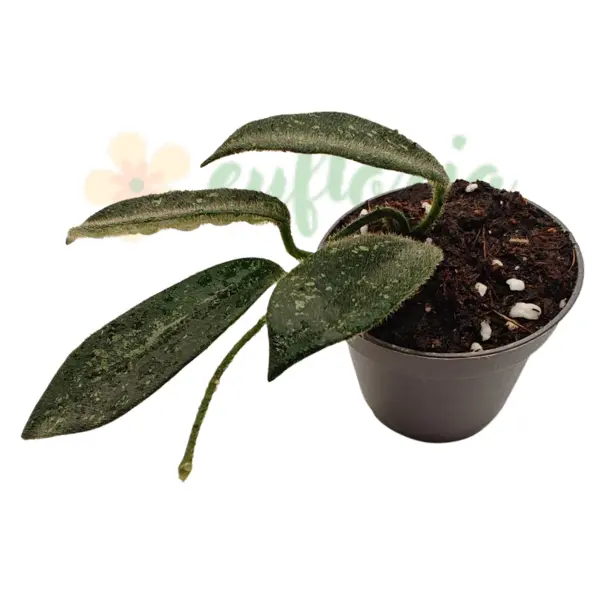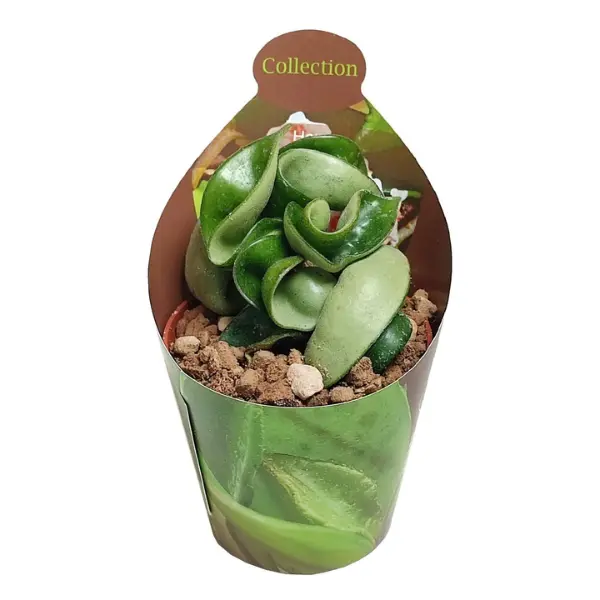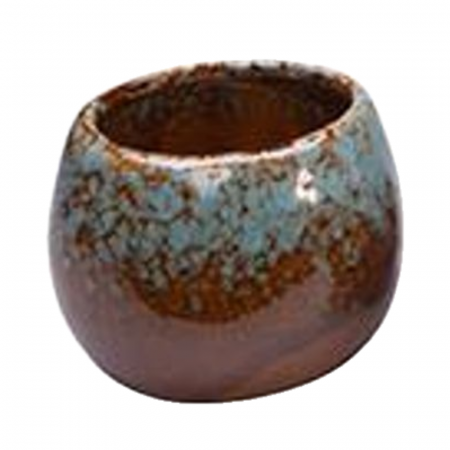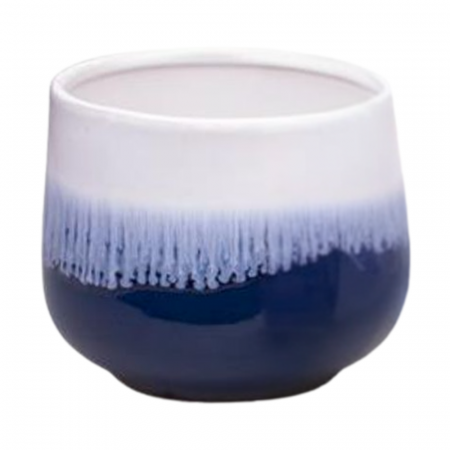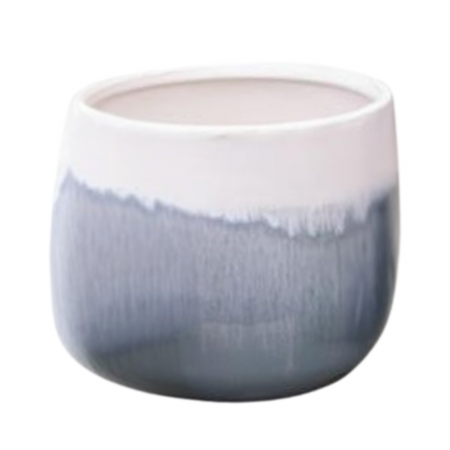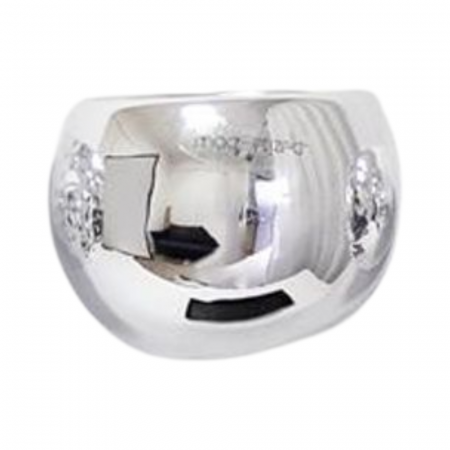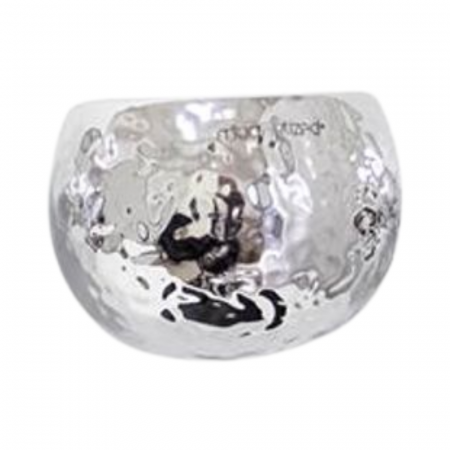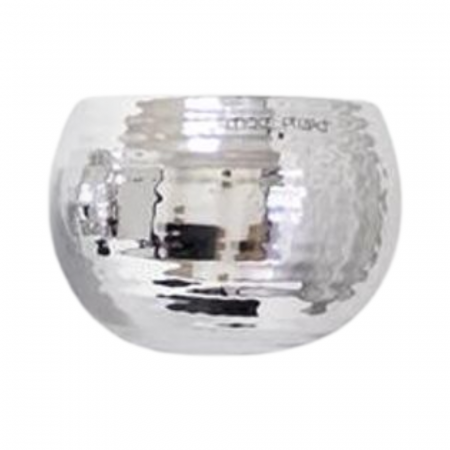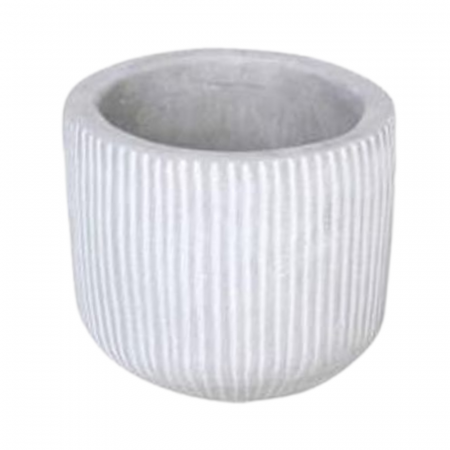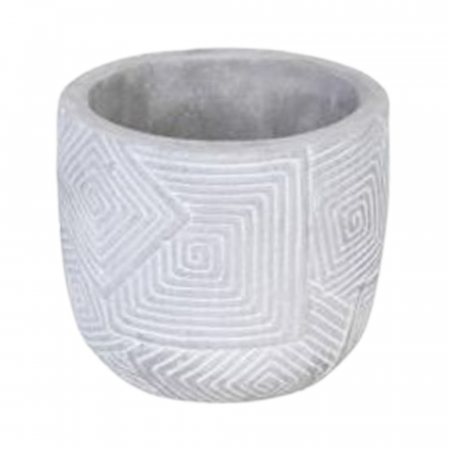Hoya 'Joy' Ø10.5–Ø12 cm
Hoya 'Joy' fills your home with happiness through its bright pink flowers and fresh foliage, being an easy-to-care-for tropical plant.
Înălțime aprox. plantă (cu tot cu ghiveci): 20 cm
Stadiu înflorire: Fără flori
- Description
- Characteristics
- Reviews (0)
- FAQ
🌸 Hoya 'Joy' – an explosion of color and tropical delicacy
General description
- Seductive pink flowers: Hoya 'Joy' brings a touch of magic to any corner of your home with its vibrant pink umbrella-shaped flowers, with a deep red center, resembling waxy jewels that delight the eyes.
- Velvety green leaves: The thick, healthy green leaves create a perfect contrast with the flowers, and their glossy surface reflects light beautifully, giving the plant a fresh look.
- Easy tropical charm: With its compact yet trailing growth habit, this plant can instantly transform shelves, bright corners, or hanging planters into lively green spaces.
How to care for Hoya 'Joy'
- Light: Loves bright indirect light that encourages flowering. It also tolerates gentle morning sun.
- Watering: Allow the substrate to dry almost completely between waterings. Its succulent leaves make it tolerant to short periods of drought.
- Soil: Use an airy, well-draining mix – a combination of perlite, pine bark, and peat to allow the roots to breathe.
- Temperature and humidity: Thrives best between 18–28°C, and moderate humidity will keep its foliage healthy.
- Propagation: Easily propagated from stem cuttings, perfect for sharing this joyful plant with friends and fellow plant enthusiasts.
Why choose Hoya 'Joy'?
Just as its name suggests, Joy brings happiness and color to your space without requiring complicated care. It's the perfect choice if you want a plant that rewards you with stunning flowers and a delicate tropical vibe.
Lungime: 10 cm
Greutate (kg): 1 Kg
Denumire: Hoya
Diametru: 10.5 cm
Cerințe lumină: Partial umbra
Tip plantă: Decorative
Utilizare: Interior
Tip suport: Ghiveci
Material Suport: Plastic
Are there multiple stems/plants in the pot?
There is one plant in the 10.5 cm pot version.
There are two plants in the 12 cm pot version.
What should I do if the plant arrives damaged?
It is very rare for couriers to mishandle parcels, even though we label them as "FRAGILE".
In the unfortunate event that one or more plants, or the package, arrive damaged, please contact us and we will solve the situation together.
We assure you of our full cooperation.
Can I choose the exact plant I order?
You can contact us via WhatsApp or by phone to receive photos of the available specimens before shipping.
Does it have flowers?
Most of the Hoya plants we sell are not in bloom when shipped. However, they can bloom under the right light, temperature, and humidity conditions. The flowers are often very fragrant, especially in the evening.
Check the "Flowering stage" for each product to see whether the plant is:
- Without flowers
- With formed peduncles
- With flowers
Hoya 'Joy' flowers typically last between 7 and 10 days after opening, sometimes up to two weeks if the environment is stable (no drafts and consistent temperature).
After the flowers fade, do not cut the peduncles, as they can produce new inflorescences in subsequent seasons.
Blooming period
- Under ideal light and temperature conditions, Hoya 'Joy' can bloom multiple times a year, more frequently in late spring and summer (May–August).
- In indoor environments with adequate artificial light, flowering can even occur outside the natural season, for example in winter, if exposed to more than 12 hours of light per day.
Flower description
- The flowers are small, star-shaped, light pink with a whitish center, grouped in umbels.
- They form on permanent peduncles, so do not remove them after blooming.
Fragrance of the flowers
- The scent is medium to strong, more intense in the evening and at night.
- The aroma is sweet-floral, with notes of honey and vanilla, sometimes slightly fruity, typical of Hoya carnosa hybrids.
To encourage reblooming of Hoya 'Joy', follow these essential tips:
1. Do not cut the flower peduncles — they are permanent and can produce new flowers multiple times. Even if partially dried, keep them.
2. Provide strong and consistent light — at least 10–12 hours per day. Ideally, place the plant near an east- or southeast-facing window. In the cold season, you can use a LED grow light.
3. Avoid moving the plant — after peduncles appear, changing its position or light angle can stop flower development.
4. Use appropriate fertilizer — apply a balanced indoor plant fertilizer (e.g., NPK 10-10-10) during growth, and switch to a phosphorus-rich one (e.g., 10-30-20) when buds form.
5. Maintain temperatures between 22–28°C by day and above 18°C by night — sudden changes can stop bud formation.
6. Water moderately — let the substrate dry slightly between waterings. Overwatering can inhibit flowering.
7. Ensure ambient humidity of 60–70% — if the air is too dry, buds may drop before opening.
8. Allow a mild rest period in winter — reduce watering and avoid overfertilizing; this pause helps the plant store energy for the next flowering cycle.
Is it toxic for pets or children?
Hoya 'Joy' is an ornamental plant not intended for consumption. It contains a milky latex (whitish sap) that appears when leaves or stems are damaged. This latex contains irritating compounds (mainly alkaloids and saponins) which can cause:
- For humans: skin or eye irritation, especially in sensitive individuals; if ingested, it may cause nausea, vomiting, or digestive discomfort.
- For pets (cats, dogs, rabbits, etc.): excessive salivation, oral irritation, mild vomiting, or temporary loss of appetite — symptoms are usually mild but unpleasant.
Although Hoya 'Joy' is not considered "highly toxic", it belongs to the category of ornamental plants with irritating latex.
It is recommended to:
- avoid handling with bare hands if you are sensitive to the sap,
- keep the plant away from children and pets,
- wash your hands immediately after cutting or repotting.
Where should I place it indoors for blooming?
Ideally near an east- or southeast-facing window, with bright indirect light and without sudden changes of position after peduncles appear.

![Hoya 'Joy' [1] Hoya 'Joy' [1]](https://gomagcdn.ro/domains2/eufloria.ro/files/product/large/hoya-joy-d12-011926.webp)
![Hoya 'Joy' [2] Hoya 'Joy' [2]](https://gomagcdn.ro/domains2/eufloria.ro/files/product/large/hoya-joy-d12-753776.webp)
![Hoya 'Joy' [3] Hoya 'Joy' [3]](https://gomagcdn.ro/domains2/eufloria.ro/files/product/large/hoya-joy-d12-800093.webp)
![Hoya 'Joy' [0] Hoya 'Joy' [0]](https://gomagcdn.ro/domains2/eufloria.ro/files/product/medium/hoya-joy-d12-011926.webp)
![Hoya 'Joy' [1] Hoya 'Joy' [1]](https://gomagcdn.ro/domains2/eufloria.ro/files/product/medium/hoya-joy-d12-753776.webp)
![Hoya 'Joy' [2] Hoya 'Joy' [2]](https://gomagcdn.ro/domains2/eufloria.ro/files/product/medium/hoya-joy-d12-800093.webp)

